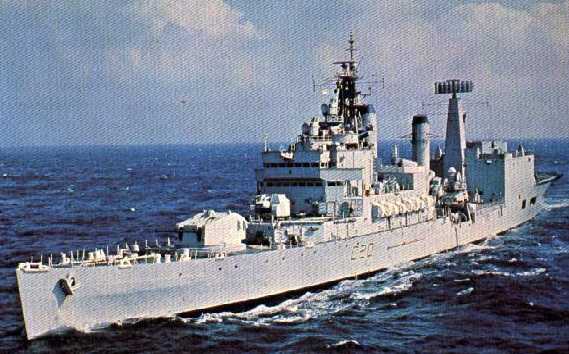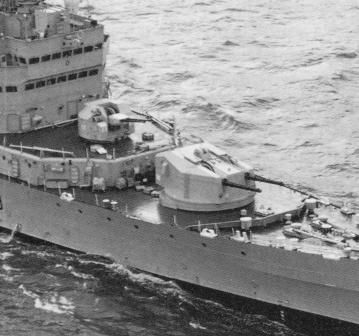|
In the early 1950s, these weapons were selected to arm the Tiger class cruisers, which had lain incomplete since the end of World War II. These ships were then completely redesigned and work was resumed in 1954 with HMS Tiger being completed in 1959, nearly two decades after she had first been laid down. There are many reports that these weapons were unreliable in service, but that does not seem to be the case. The initial problems found during development at Shoeburyness and with the prototype on HMS Cumberland were rectified during trials, one major breakthrough being the choice and filtration of the oil in the oily servos fitted to the turrets. "A normal days' firing would be 150 to 200 shells every day. Lion would be engaged in doing a shoot, usually at both air and surface targets. The problem with the turrets was not reliability, but with the inordinate amount of highly skilled technical staff required to keep the guns operational (ordnance artificers, weapons mechanics and seaman armourers). That said, on Lion the maintenance team on A turret used to muster at 1330 on Q1 gundeck with umbrellas, before disappearing into the dripping oily wastes of A turret. We had two misfires that I remember, the shell eventually falling out into the sea after about 20 minutes. Lion at least twice changed all its barrels (the last time from Hong Kong when an emergency flared up and only one gun was operational the other three barrels were changed at sea on the way). The joke round the fleet never was reliability, the joke always was that the ships could fire all ammo off within 20 minutes. Of course, this was never true as you would only fire so many seconds and then change targets. In normal practice shoots against AA targets, the first shell would hit the target. On NGS shoots, two or three targeting rounds would be fired to hit the target and then a twenty second burst with both barrels would destroy the target." - Peter Parkinson, who served on HMS Lion during her second commission. These weapons were controlled by the Gun Direction System (GDS1) using the Type 992 radar. This system enabled the ships to engage multiple targets within a few seconds of each other and was technically very advanced for its time. HMS Blake was the last cruiser in commission in the Royal Navy. In December 1979, a few days before she was decommissioned, she enjoyed the distinction of firing the Royal Navy's last 6" (15.2 cm) gun salvo. Constructed of a loose barrel with hydraulically operated horizontal sliding breech block. |

HMS Tiger as ASW cruiser |

Forward guns of HMS Blake
|

6"/50 (15.2 cm) QF Mark N5 Cartridge Case
|
| .
See photographs 3775, 3776, 3777, 3778, 4564 and 4565 Note the slide connected to the cartridge ejection port in photograph 4565 See photographs 7846, 7848, 7849, 7850, 7851, 7852 and 7853 |